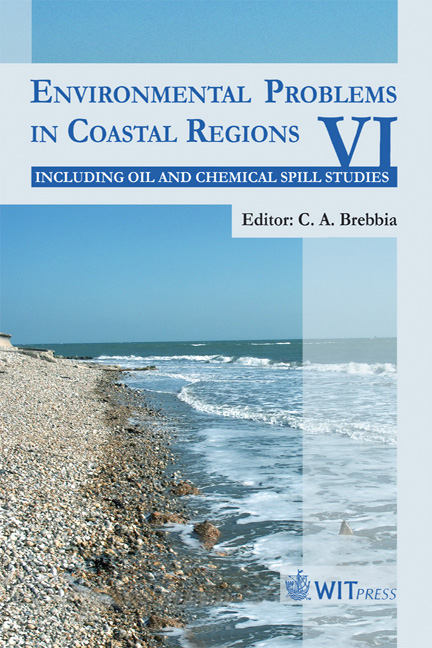Oil Spill Simulation In The Japan Sea
Price
Free (open access)
Transaction
Volume
88
Pages
6
Published
2006
Size
790 kb
Paper DOI
10.2495/CENV060261
Copyright
WIT Press
Author(s)
H. Kawamura, T. Kobayashi, N. Hirose, T. Ito & O. Togawa
Abstract
An assessment system of the marine environment in the Japan Sea is being developed at the Japan Atomic Energy Agency. This study aims to confirm the validity of the assessment system by reproducing the oil spill at the incident of Russian tanker Nakhodka in January 1997. As a main subject, one of the data assimilation techniques, an approximate Kalman filter, was applied to the assessment system by combining an ocean general circulation model with sea level measurements of satellite data. Using calculated ocean currents, simulations of the behaviour of spilled oil were performed with a particle random-walk model. A number of experiments with different parameters and situations showed that the assimilated daily ocean currents with wind drift were for the simulation for movement of spilled oil. Keywords: assessment system of marine environment, data assimilation, oil spill, ocean general circulation model, particle random-walk model. 1 Introduction The Japan Sea is a marginal sea located in the western part of the North Pacific connecting to open oceans through shallow straits (Tsushima, Tsugaru, Soya and Mamiya Straits). From the point of view of human activities, it is a busy route for international shipments and there are many nuclear-powered facilities in coastal areas of the Japan Sea. Therefore, it is possible that pollutants leak into the Japan Sea at incidents of ships or surrounding facilities. Taking these situations into account, an assessment system of marine environment in the Japan Sea is expected to develop for forecasting/hindcasting
Keywords
assessment system of marine environment, data assimilation, oil spill, ocean general circulation model, particle random-walk model.





